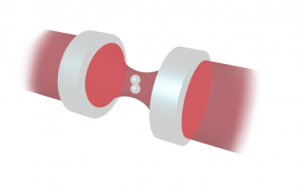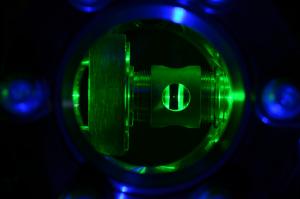Researchers slow rotation to quantum thresholds
Researchers at ETH Zurich & Technology Innovation Institute’s Quantum Research Centre are pioneering research to slow rotational motion to record low values
Researchers at ETH Zurich and the Technology Innovation Institute’s [TII] Quantum Research Centre (QRC) are pioneering research to slow rotational motion to record low values as well. Rene Reimann, Director of Quantum Sensing at QRC, said, “At the moment, this is the smallest rotational motion of a nanometric levitated object that has ever been achieved.”
Reducing both translational and rotational motion to the ‘ground state’ will allow researchers to study physical phenomena that researchers have theorised about but never measured in practice. Fons van der Laan, Ph.D. student at ETH Zurich, said, “We are trying to find out what happens at the boundary between classical and quantum physics. This research will help us to learn where each theory collapses and what can arise in the space between them.”
Small precise pushing
Like just a few other groups, the researchers have chosen to monitor and control the rotation of a levitated nano-dumbbell consisting of two tiny glass balls. This dumbbell configuration makes it easier to monitor and control the nano-object’s rotation. At room temperature, a small structure like these nano-dumbbells wiggles back and forth with a rotational amplitude of about 6 degrees.
The researchers developed a contraption to push against the direction of wiggle gently and precisely with a laser. This is akin to gently pushing backwards against a child’s movement in a swing to slow her down, only thousands of times faster and with minute force.
The contraption has reduced this wiggle to the lowest levels ever recorded. But the wiggle will need to be reduced another one-hundred times to study quantum phenomena like entanglement and superposition of larger-sized objects.
New opportunities
This research could also lead to highly sensitive torque sensors for measuring rotational motion. It could allow scientists to explore exotic quantum phenomenon like vacuum friction which causes things to slow down even when there is nothing else to dampen the movement. “This rotational vacuum friction has been predicted but not measured,” van der Laan said.
In the long run, this innovative nano-dumbbell approach could also lead to inertial sensors that are more accurate than optical gyroscopes. The existing state-of-the-art gyroscopes measure changes in light beams that travel around in a small ring. “But photon sensors have hit a wall and most likely will not get much better, so novel approaches are being pursued to increase sensitivity further,” Reimann said.
Finally, van der Laan believes there are opportunities to collaborate with others in adjacent scientific domains to develop approaches the team at ETH and QRC has not considered.
These experimental achievements have been conducted as a team effort at ETH Zurich in the laboratory of Lukas Novotny, with van der Laan and Martin Frimmer as the main driving forces.
This research has been published in Physical Review Letters:
https://journals.aps.org/prl/abstract/10.1103/PhysRevLett.127.123605
Tania Ameer
APCO Worldwide
+971 526725138
email us here
Legal Disclaimer:
EIN Presswire provides this news content "as is" without warranty of any kind. We do not accept any responsibility or liability for the accuracy, content, images, videos, licenses, completeness, legality, or reliability of the information contained in this article. If you have any complaints or copyright issues related to this article, kindly contact the author above.



